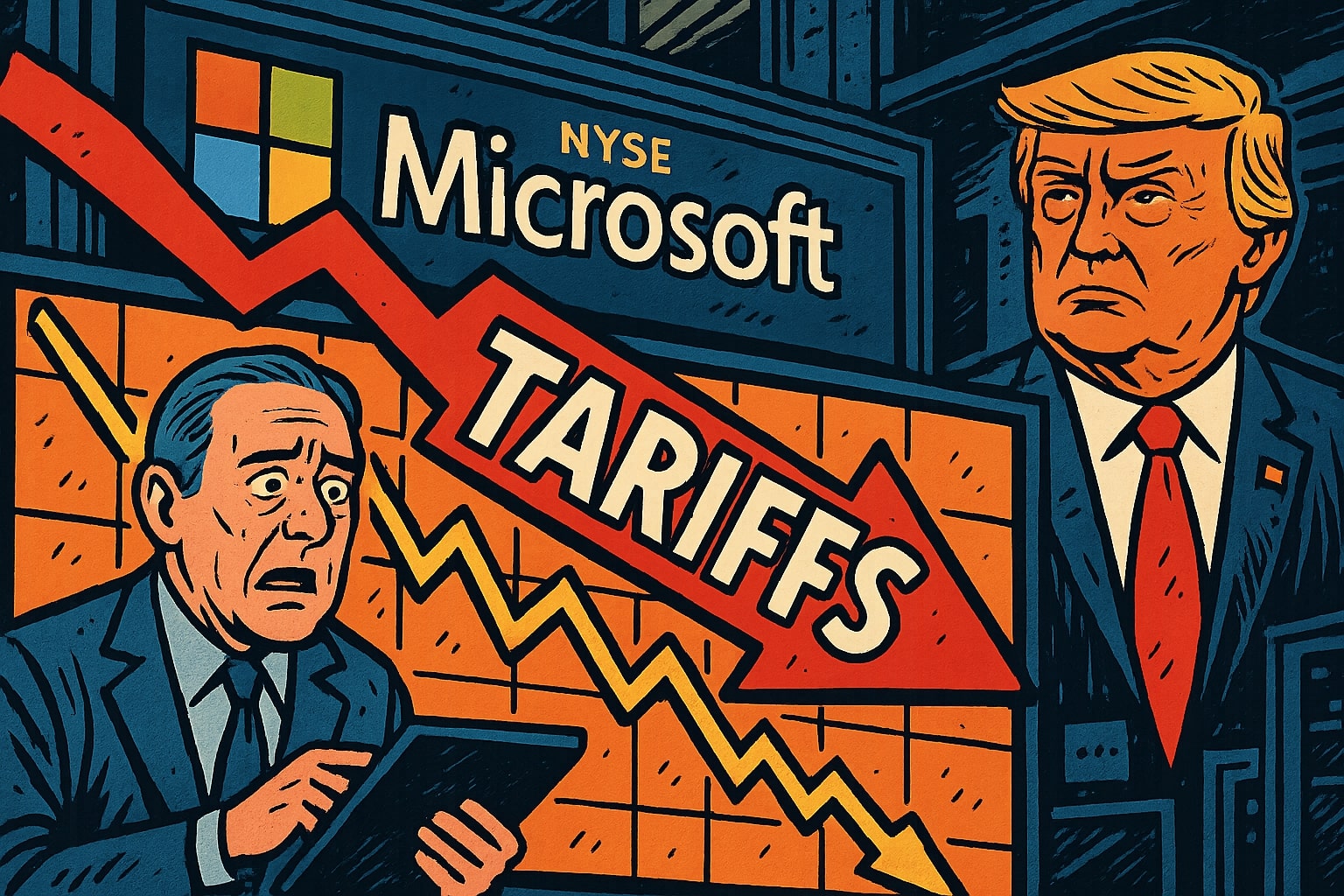Microsoft Stock Analysis: Navigating Economic Headwinds and Strategic Shifts in the Face of Global Uncertainty
The Impact of Market Conditions on Microsoft (NASDAQ:MSFT)
Microsoft’s stock performance has been under scrutiny due to several macroeconomic challenges, including President Trump’s tariffs, a potential trade war, and slower growth in key business segments. The company’s fiscal second-quarter results revealed mixed performance, with revenue and earnings per share (EPS) beating expectations, yet growth rates have shown signs of slowing. In this dynamic market environment, Microsoft (NASDAQ:MSFT) continues to face both opportunities and risks that investors need to carefully assess.
Microsoft’s fiscal Q2 2025 results showed a revenue of $69.63 billion, surpassing analysts' estimates, while EPS reached $3.23 per share, driven by strong performance in its cloud and AI segments. However, the company’s net income growth rate was relatively low at just 10.24%, signaling that even strong earnings are struggling to match prior growth rates. One key disappointment was the Intelligent Cloud segment, which, while still generating $25.54 billion in revenue, saw a deceleration in growth from 33% to 19%. Azure, a critical component of Microsoft's cloud business, posted a growth rate of 31%, down from previous highs, signaling that growth might be stabilizing.
Challenges in Microsoft's Growth Strategy and Market Position
Despite outperforming expectations, Microsoft (NASDAQ:MSFT) is facing significant pressure in key segments. The slower-than-expected growth in Azure and the overall deceleration in the cloud and AI space have raised concerns. With revenue guidance for the third quarter of 2025 indicating a lower-than-expected range of $67.7 billion to $68.7 billion, the company’s outlook suggests potential headwinds in maintaining its growth momentum. Microsoft (NASDAQ:MSFT)’s ability to grow its cloud and AI business remains crucial to its long-term strategy, but the near-term risks of slower adoption and global economic conditions weigh heavily on the stock.
Valuation Concerns: Is Microsoft Overvalued?
One of the most significant issues facing Microsoft (NASDAQ:MSFT) is its relatively high valuation compared to other major tech stocks. With a forward price-to-earnings (P/E) ratio of 28.3x, Microsoft (NASDAQ:MSFT) is trading at a premium relative to its peers, including Meta Platforms (META) (P/E ratio of 21.02x), Alphabet (GOOGL) (P/E ratio of 17.02x), and even Nvidia (NVDA) (P/E ratio of 22.5x). This premium valuation has made Microsoft (NASDAQ:MSFT) less attractive to investors seeking more value-oriented opportunities in the tech sector, especially given the current economic uncertainties.
Further exacerbating this concern, Microsoft (NASDAQ:MSFT)’s stock has shown signs of technical weakness. The stock has breached key support levels, signaling potential further declines. Recent moves in its stock price reflect a broader bearish market sentiment, and the technical indicators—such as the -2 standard deviation price channel—suggest that there is a high likelihood that Microsoft (NASDAQ:MSFT) could face additional downward pressure before any significant rallies take place.
Resilience Amid Tariffs and Trade Tensions
Microsoft (NASDAQ:MSFT), like many other global enterprises, is exposed to the growing risks associated with international tariffs and trade wars. The recent increase in tariffs imposed by President Trump and the subsequent retaliation by China has created significant market turmoil, with Microsoft (NASDAQ:MSFT) falling in line with other tech stocks. The broader market volatility and the potential for a global recession could slow down enterprise IT spending, further impacting Microsoft (NASDAQ:MSFT)’s growth prospects. However, the company’s diversified business model, particularly its cloud offerings and productivity tools, provides some insulation from the full impact of these challenges.
Microsoft’s Strategy in the Face of Uncertainty: AI and Cloud Focus
Despite these concerns, Microsoft (NASDAQ:MSFT) remains focused on its strategic investments in cloud computing and artificial intelligence. The company has committed substantial resources to developing its Azure platform, which remains one of the fastest-growing parts of its business. Azure’s 31% annual growth rate in Q2 2025, although slightly down from previous quarters, indicates that Microsoft (NASDAQ:MSFT) is still well-positioned in the cloud market. The company’s investments in AI are also noteworthy, with Microsoft (NASDAQ:MSFT) expecting its AI revenue to reach $13 billion this year. These sectors, combined with the company’s established enterprise base, could provide a significant upside in the long term, even if short-term growth is tempered by market conditions.
Insider Transactions and Stock Sentiment
Looking at insider transactions for Microsoft (NASDAQ:MSFT), the sentiment has been mixed. While there have been some notable transactions, including stock sales by executives, the overall sentiment around the stock remains relatively stable. Investors might want to track insider activity closely, as large transactions by executives could provide insights into the company’s future prospects. For more information on insider transactions, you can access the data directly through Microsoft Insider Transactions.
Conclusion: Hold Rating With Cautious Outlook
In conclusion, Microsoft (NASDAQ:MSFT) continues to face a complex set of challenges. Its premium valuation, combined with the slowing growth in key areas like Azure, and the broader economic and geopolitical risks, suggests that the stock may face more downside in the short term. While the company’s strategic investments in AI and cloud infrastructure position it well for long-term growth, the current market conditions necessitate caution. For now, the stock holds a “hold” rating as investors await clearer signs of a rebound. If Microsoft (NASDAQ:MSFT) can break above the $396.34 resistance level, this may signal a potential reversal, but until then, further declines are likely. Investors should monitor these levels closely and be prepared for volatility in the tech sector.

















